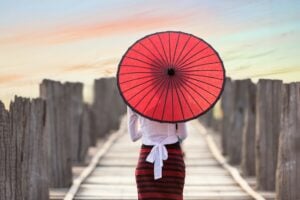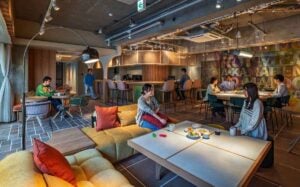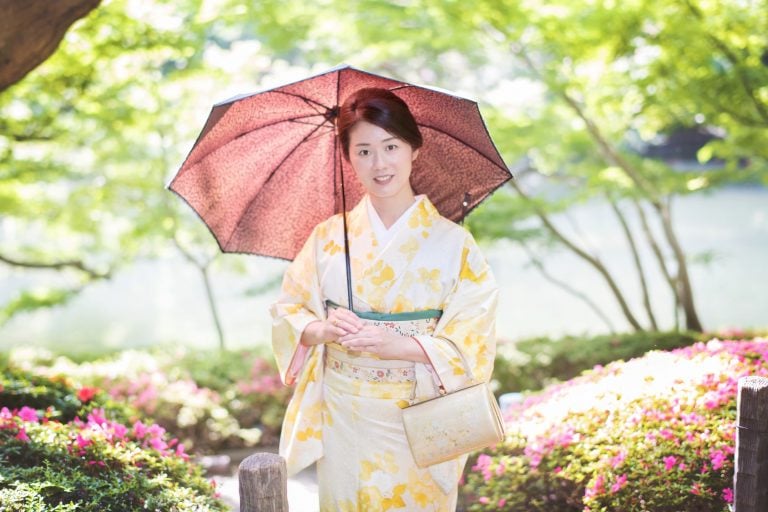
There are many reasons why you may want to buy a kimono. Maybe you want to look the part at a traditional Japanese event? Or maybe you want a cool, traditional Japanese souvenir? Whatever your reason, read our guide on how to buy the right kimono for you.
What is the difference between a kimono and a yukata?
First, many westerners confuse yukata with kimono. A yukata is usually worn in summer. Its material is light with a stiff collar and shorter sleeves than a kimono. The simplicity of the yukata design means they are worn more casually, for example at onsen and summer festivals.
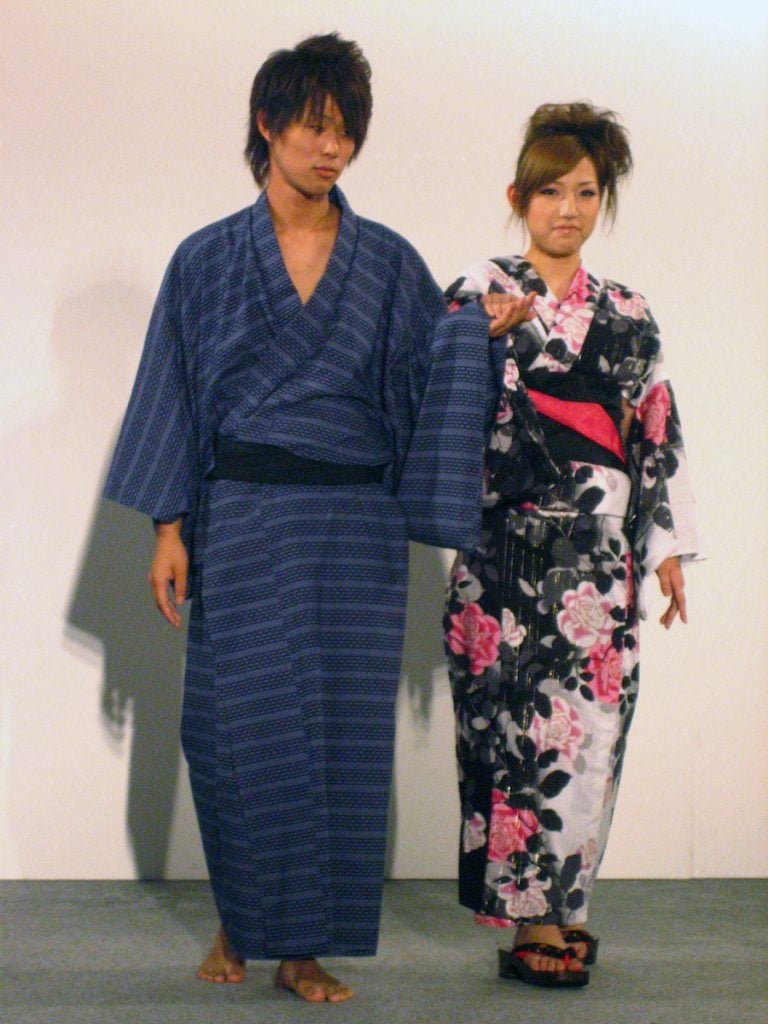
Kimonos are a lot more formal! They consist of two layers, an inner lining and a patterned outer layer. The material is heavier and more luxurious than yukata, usually silk.
Please note that kimonos are quite difficult to put on by yourself! If you are looking for some cool casual wear, it may be better to buy a yukata, rather than a kimono. Also, kimonos are a lot more expensive!
How much does a kimono cost?
The cost of a kimono can vary widely. There are many factors which can impact the price. Lower-quality kimonos made from cheaper materials can be bought from as little as ¥1,000 online. A formal designer kimono can cost up to ¥150,000!
Kimono material
- A good-quality wool kimono – ¥28,000 – ¥35,000
- A silk kimono – ¥23,000 – ¥58,000
- A formal kimono, for special occasions – ¥92,000 – ¥140,000
The price of kimono can also be impacted by the type of dyeing:
Kimono dyeing techniques
- Stencil dye kimono – ¥200,000 – ¥300,000
- Blend of stencil dye and manual dyeing – ¥400,000 – ¥800,000
- Hand-drawn kimono – Over ¥1 million
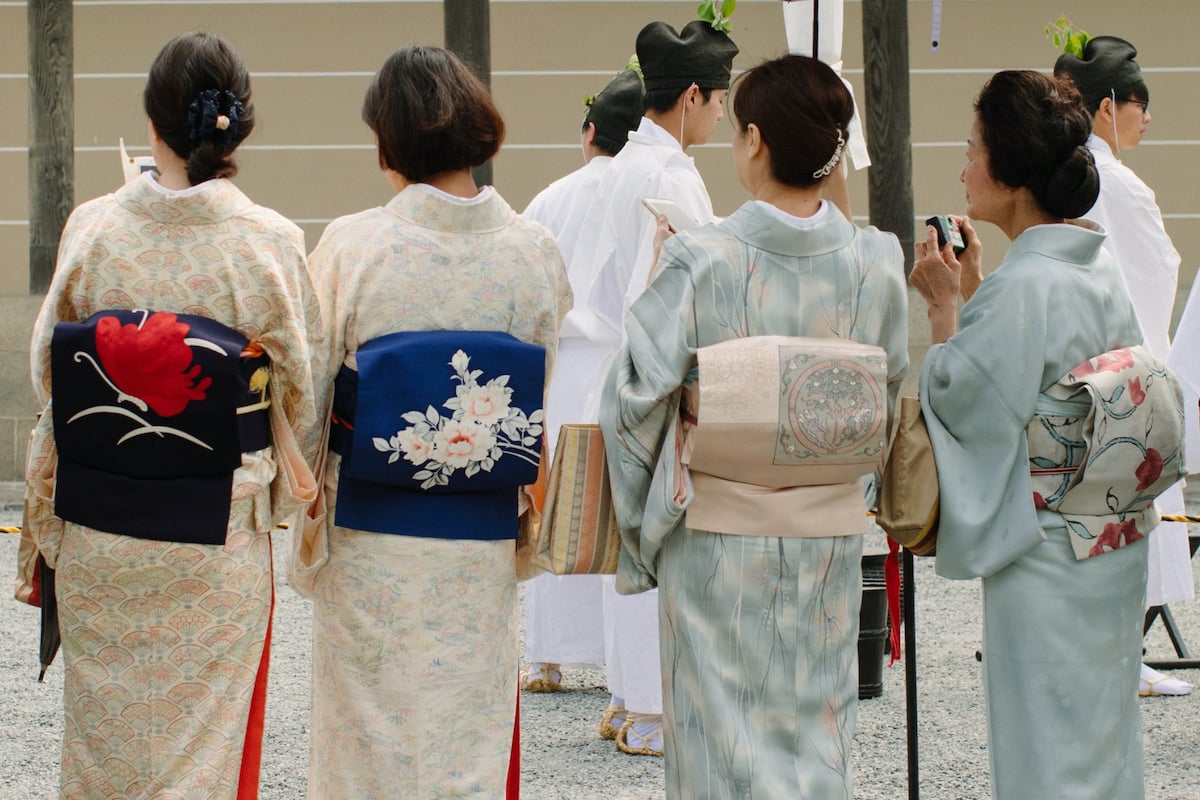
Cost of kimono accessories
Bear in mind, it is not just the kimono you have to buy. You’ll also have to budget for all the accessories you will need to complete the outfit:
- Nagajuban (a kind of underwear for kimono): ¥5,000 to ¥30,000
- String: ¥500 to ¥1,000
- Date-jime (to keep the kimono in place): ¥700 to ¥3,000
- Geta / Zori (traditional Japanese footwear): around ¥3,000 to ¥20,000
- Matching bag: ¥3,000 to ¥50,000
- Tabi socks – ¥800 to ¥1,500
What style of kimono should I buy?
In modern Japan, kimono are usually worn only on special occasions.
Coming of age kimono
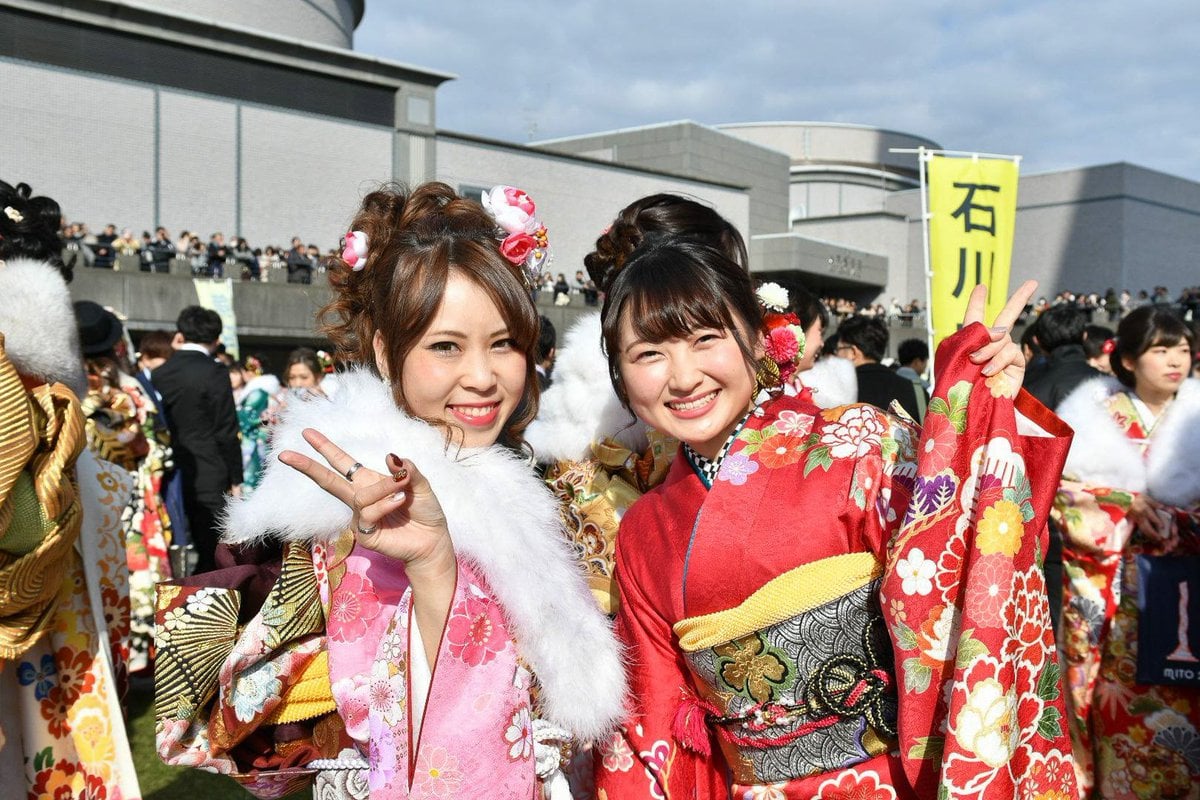
Coming of Age Day (成人の日) is held on the second Monday in January. This is a day to celebrate young people who have reached, or will reach, the age of maturity (20 years old in Japan). Coming of age events are often a colorful fashion show of kimono!
Young women will usually wear a furisode (振袖) kimono, with long sleeves. Furisode can be distinguished by the sleeve length:
- Ofurisode (around 114 cm)
- Chufurisode (around 100-95 cm)
- Kofurisode (around 85 cm)
Ofurisode is the most formal, usually reserved for brides or people of the highest honor. Chufurisode is semiformal and the most commonly worn at coming of age ceremonies. Kofurisode are slightly more casual, for graduation ceremonies and special events.
Wedding Kimono
It is necessary for the bride and groom to wear traditional kimono as part of a Shinto wedding ceremony. These can be very expensive and are usually rented.
Wedding guests often wear kimono too. Married women who are relatives of the bridal party usually wear a formal tomesode (留袖) with the family crest. Unmarried women often wear a furisode (similar to Coming of Age ceremonies). However any woman can wear a homongi (訪問着) kimono to a wedding.
Kimono for funerals
If you are buying a kimono for a funeral of a close friend or relative, it must be a simple style and black. The most common style is a ‘mofuku’ (喪服)
Kimono for men
Kimono for men are a little more simple! Here are the main types:
Kuromontsuki haori hakama – This is this most formal style of mens kimono, for weddings, funerals, graduation ceremonies and coming of age ceremonies. It includes a ‘haori’ (light coat) and ‘hakama’ (loose trousers).
Iromontsuki haori hakama – similar to the Kuromontsuki, but cannot be worn to funerals.
Haori hakama – This is kimono made from silk crepe or women ‘tsumugi;. It is too casual for formal events, but ideal for gathering with friends or a New Year’s visit to a shrine or temple.
Nagagi – This is the most casual type of men’s kimono. It includes a haori, but no trousers. This kind of kimono is perfect for casual strolling and admiring the views.
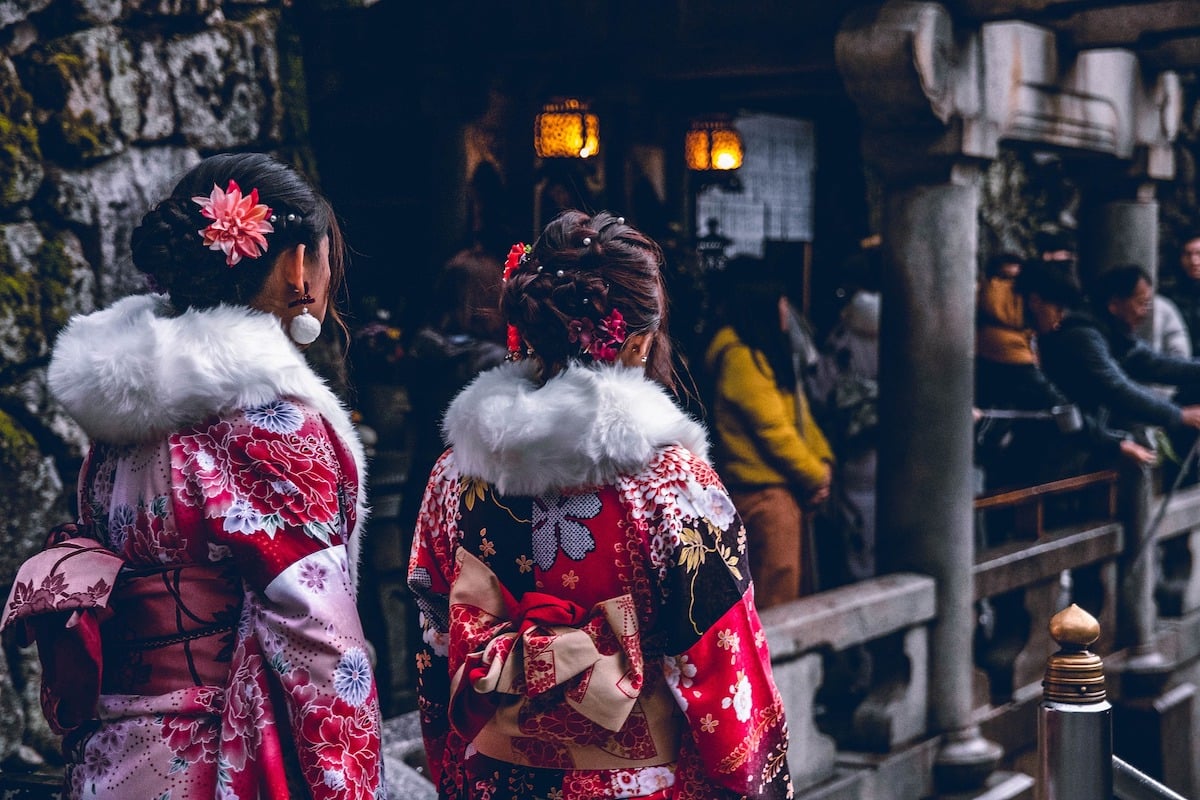
Where is the best place to buy a kimono?
If you want to buy a kimono, there are a few different places you can try:
Buy a kimono online
Predictably, there is a huge choice of online shops selling kimono. There are a lot of sites offering very cheap and low-quality kimono. However, you can pick up a bargain by purchasing a quality kimono second hand. Kimonoya Japan have some gorgeous vintage kimono for reasonable prices.
Japanese Department stores
Kimono stores in Japanese department stores are catered for wealthy clientele, who wear kimono regularly. Buying kimono here is an expensive option (between ¥200,000 to ¥5 million) but you will definitely be purchasing a high-quality kimono that will looks stunning for years. Also, the store staff are experts in finding the best style and size kimono for you.
Specialist Kimono stores
If you want a cheaper option, specialist kimono stores are a little less expensive than department stores. Their ranges cost between ¥200,000 to ¥2 million.
H3: Kimono franchises.
Kimono franchise stores are the best budget-friendly option. Their selection of kimonos are typically from ¥100,000 to ¥200,000. Tansuya has a wide range of excellent new and second-hand kimonos.
Kimono rental experience days
Reading this, you may have noticed that buying your own kimono can be a complicated and expensive process! If you want a full kimono experience without breaking the bank, considering renting a kimono instead. This way you can get all those gorgeous Instagram photos with no buyer’s remorse!
Many kimono rental places will offer packages. These packages include the rental, hair styling and a lovely assistant to help you get dressed. Packages cost around ¥2,000 to ¥8,000 depending on the quality and options available.
My favorite place to rent kimono is in the picturesque Kawagoe, in Saitama. You can rent a beautiful kimono and stroll down ‘Little Edo’ for a truly authentic Japanese experience.
Article Author: Beth Lawson





